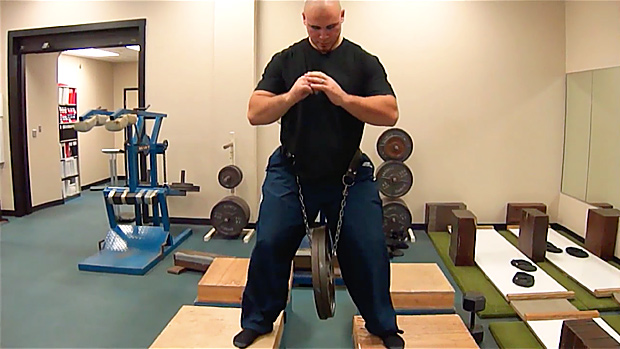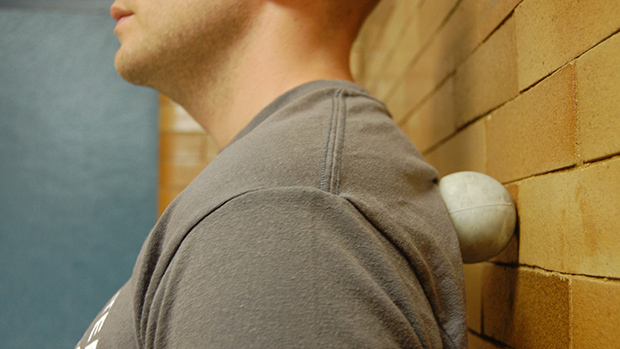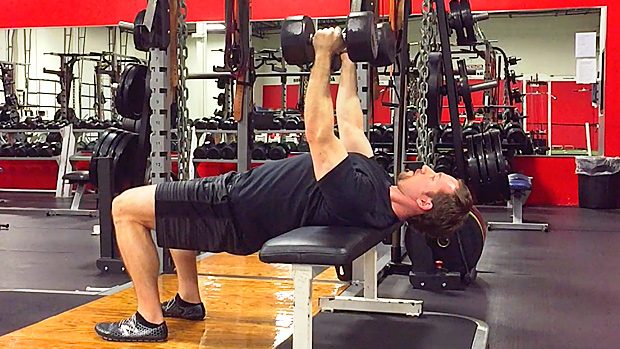Upper Body Injury? Bring The Legs Up
Too many well-meaning lifters resort to isolation-machine leg exercises while recovering from an upper-body injury. Sure, there are times when a shoulder or pec injury is so severe that holding a barbell on the back is out of the question. As a result, a lifter can lose considerable muscle and strength in his lower body because he assumes that leg extensions and hamstring curls are the only friends he has left.
That's where he's wrong. The belt squat is a great tool for this situation. No hands needed. The belt squat is challenging in ways that conventional squats are not. I've seen athletes who can back squat well over 500 pounds struggle to hit adequate depth with just two plates hanging from the belt.
The reason for the discrepancy is that a great amount of stabilization, balance, and strength is needed to squat down like this, and some of us may have more experience with a big weight swinging in between the legs than others. (I'm here all week.)
Balance may be the limiting factor in increasing weight but progress will come with time. Greater levels of stabilization and core strength inevitably develop from belt squats that will pay dividends when you recover from your injury and start training with your main lifts again.
Tips
- Keep your lower back arched despite the urge to fall forward.
- Have someone help you get up on the boxes safely with the weight hanging from the belt.
- Have someone there to spot you in case you start to fall forward.
- Stand on two parallel benches if you don't have access to boxes in your gym.





